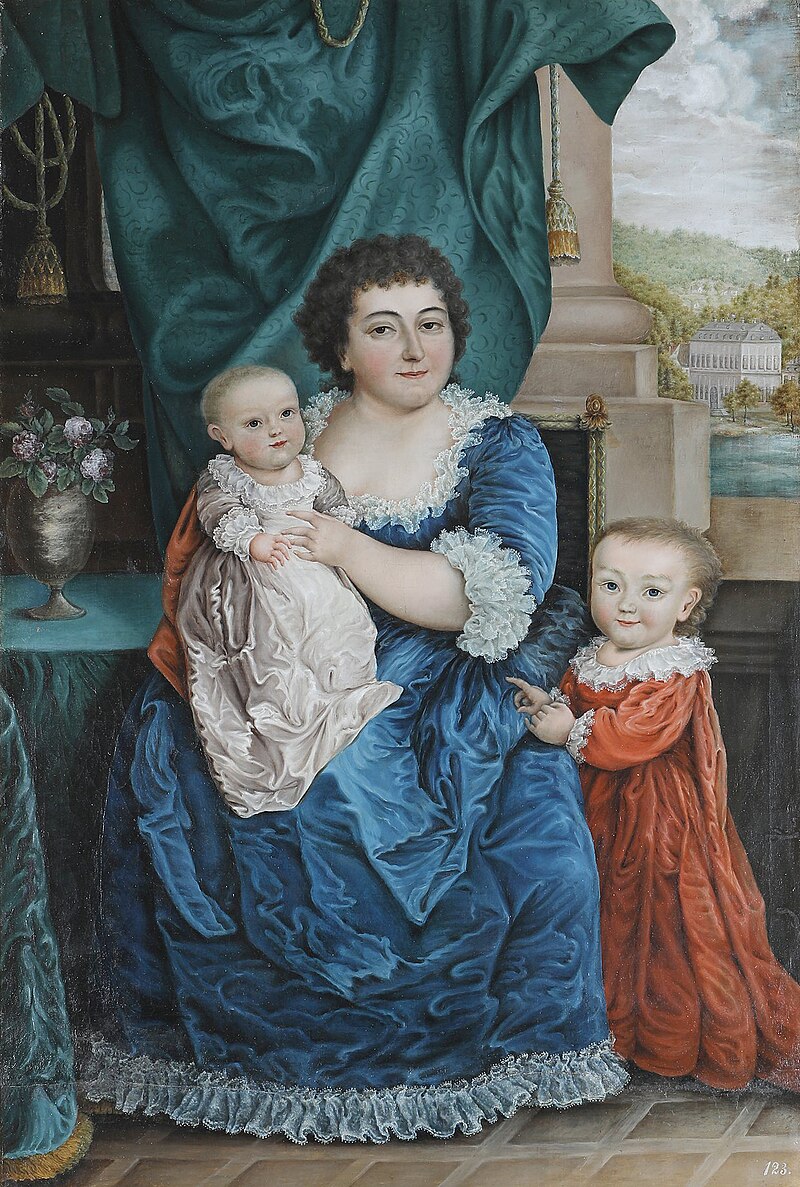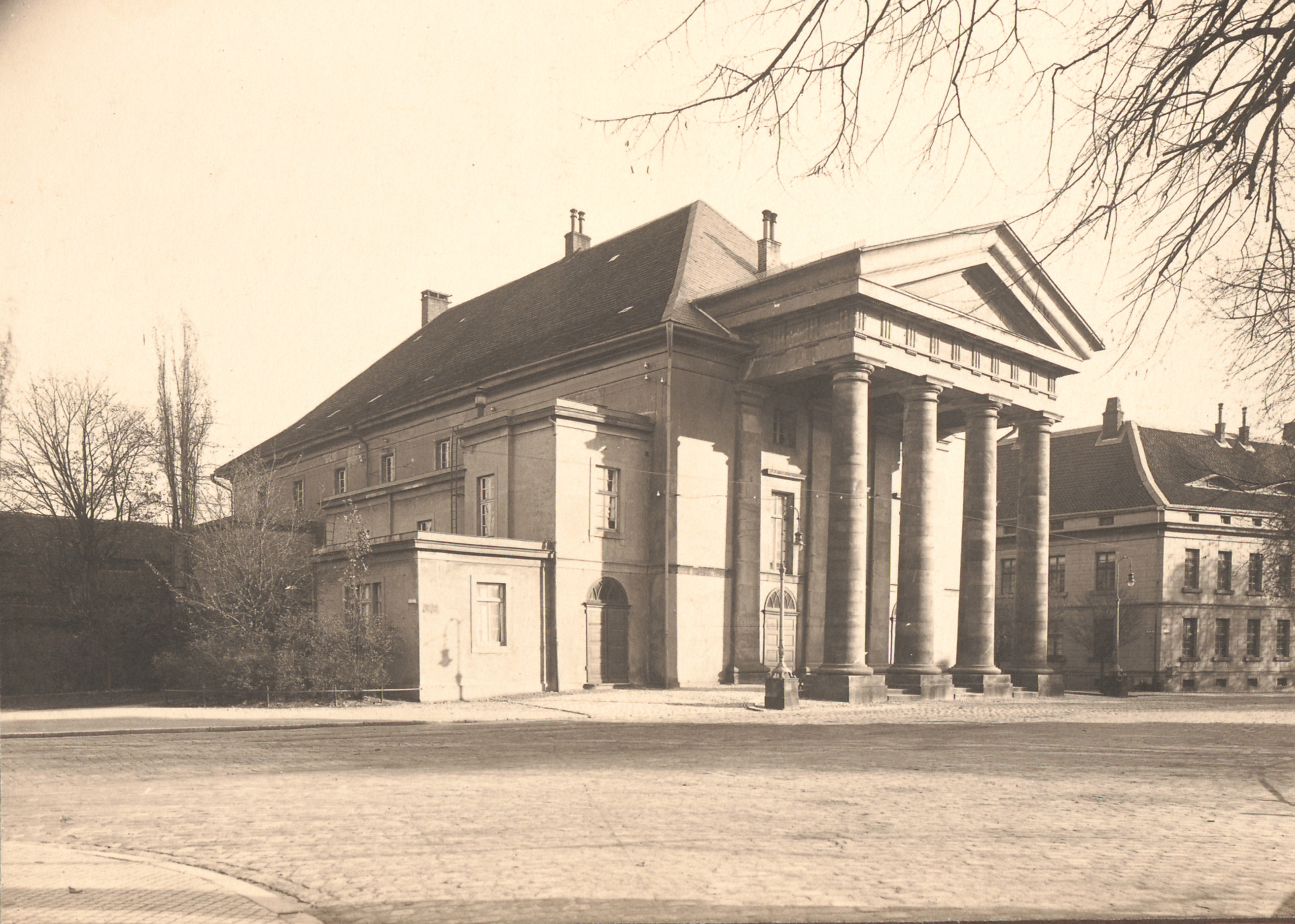by Susan Flantzer © Unofficial Royalty 2020
Principality of Lippe: Originally called Lippe-Detmold, the Principality of Lippe came into existence in 1789 when it was raised from a County within the Holy Roman Empire to a Principality. Leopold I, Count of Lippe-Detmold became the first Prince of Lippe.
At the end of World War I, Leopold IV, the last Prince of Lippe, was forced to abdicate on November 12, 1918. However, Leopold negotiated a treaty with the new government that allowed his family to remain in Lippe. Today the territory that encompassed the Principality of Lippe is located in the German state of North Rhine-Westphalia.
*********************

Leopold II, Prince of Lippe; Credit – Wikipedia
Leopold II, Prince of Lippe (Paul Alexander Leopold) was born on November 6, 1796, in Detmold, Principality of Lippe, now in North Rhine-Westphalia, Germany. He was the elder of the two sons of Leopold I, Prince of Lippe and Princess Pauline of Anhalt-Bernburg.

Leopold with his mother and younger brother; Credit – Wikipedia
Leopold had one younger brother and one sister who survived for only one day:
- Prince Friedrich (1797 – 1854), unmarried, served in the Imperial and Royal Army in the Austrian Empire
- Princess Luise (born and died 1800)
The mental disorders of Leopold’s father Leopold I, Prince of Lippe interfered with his role as reigning prince. In 1790, Leopold I was deemed incapacitated by the Reichskammergericht (Imperial Chamber Court), one of two highest judicial institutions in the Holy Roman Empire, and placed under guardianship. In 1795, the guardianship was conditionally lifted after Leopold I’s condition improved and that is when Princess Pauline of Anhalt-Bernburg agreed to marry him.
Because of Leopold I’s mental condition, his wife Pauline became his governmental adviser and colleague, staying mostly in the background and avoiding anything that could be interpreted as exceeding her duties. Within the next few years, Leopold I developed intestinal tuberculosis, and his mental disorders returned with memory loss. Leopold I, Prince of Lippe died on April 4, 1802, at the age of 34. As his son and successor Leopold II, Prince of Lippe was just five-years-old, his mother Pauline very capably acted as Regent of the Principality of Lippe until 1820.
Malwida von Meysenbug, a German writer who was also active politically and as a promoter of writers and artists. a German writer who was active politically and a promoter of writers and artists, wrote in her Memoirs of an Idealist: “The only thing that Princess Pauline could not do was bring up her two sons, her only children. In order to teach them the principles of strict morality, she had tyrannized the two of them and treated them like children for so long that the oldest had become shy and reserved by nature, half a savage.”
As Regent of the Principality of Lippe, Pauline postponed the transfer of power to her son Leopold II, Prince of Lippe several times because of her disappointment in him and her belief that she could not turn over the government to him with a clear conscience. Finally, she announced her resignation as Regent on July 3, 1820. Leopold II needed her assistance at first and Pauline ensured that her assistance was not overt. Once her son was settled in his position as Prince of Lippe, Pauline planned to retire. However, before she could retire, Pauline died on December 29, 1820, aged 51.
On April 23, 1820, in Arnstadt, Principality of Schwarzburg-Sondershausen, now in the German state of Thuringia, Leopold II married Princess Emilie of Schwarzburg-Sondershausen. Emilie was the elder of the two children and the only daughter of Günther Friedrich Karl I, Prince of Schwarzburg-Sondershausen and Princess Karoline of Schwarzburg-Rudolstadt, the daughter of reigning Prince Friedrich Karl of Schwarzburg-Rudolstadt. Emilie’s brother succeeded their father as Günther Friedrich Karl II, Prince of Schwarzburg-Sondershausen.

Leopold and his wife Emilie with two of their children; Credit – www.findagrave.com
Leopold and Emilie had nine children including three reigning Princes of Lippe:
- Leopold III, Prince of Lippe (1821 – 1875), married Princess Elisabeth of Schwarzburg-Rudolstadt, no children
- Princess Luise of Lippe (1822 – 1887)
- Woldemar, Prince of Lippe (1824 – 1895), married Princess Sophie of Baden, no children
- Princess Friederike of Lippe (1825 – 1897)
- Prince Friedrich of Lippe (1827 – 1854)
- Prince Hermann of Lippe (1829 – 1884)
- Alexander, Prince of Lippe (1831 – 1905), unmarried, a regency was established due to his mental illness
- Prince Karl of Lippe (1832 – 1834), died in childhood
- Princess Pauline of Lippe (1834 – 1906)

The court theater (Hochfürstliches Lippisches Hoftheater), photo from 1910; Credit – Wikipedia
Leopold, shy by nature, lived a restrained life. He had two passions: hunting and the theater. The Lippe Princely Court Theater (Hochfürstliches Lippisches Hoftheater) he established in Detmold was among the best in the German monarchies but the cost was disproportionately high compared to the principality’s income. The architect Johann Theodor von Natorp was commissioned to design the theater building and the groundbreaking ceremony took place on April 18, 1825. On November 8, 1825, the curtain of the Hochfürstliches Lippisches Hoftheater went up for the first time for Wolfgang Amadeus Mozart‘s opera La Clemenza di Tito. The schedule for the theater included both opera and plays. In 1912, the original theater burned to the ground because of a damaged chimney. However, the theater was rebuilt, financed with donations from the Detmold citizens and funds from the Princely House. The rebuilt theater and the theater company established by Leopold II are still in existence today. Now called the Landestheater Detmold, it is a theater for operas, operettas, musicals, ballets, and stage plays in Detmold, North Rhine-Westphalia, Germany.
- Official Website: Landestheater Detmold (link in German)
On January 1, 1851, Leopold II, Prince of Lippe died in Detmold at the age of 54. Initially buried at the Church of the Redeemer (link in German) in Detmold, now in the German state of North Rhine-Westphalia, Leopold’s remains were later moved to the Mausoleum on the Büchenberg (link in German) in Detmold after the mausoleum’s completion in 1855. His wife Emilie survived him by sixteen years, dying in 1867. She was buried with her husband at the Mausoleum on the Büchenberg.

Crypt in the Mausoleum on the Büchenberg; Credit – Von unbekannt / Tsungam – Foto: Eigenes Werk; Infotafel: Freunde der Residenz Detmold, Gemeinfrei, https://commons.wikimedia.org/w/index.php?curid=20182639
This article is the intellectual property of Unofficial Royalty and is NOT TO BE COPIED, EDITED, OR POSTED IN ANY FORM ON ANOTHER WEBSITE under any circumstances. It is permissible to use a link that directs to Unofficial Royalty.
Lippe Resources at Unofficial Royalty
Works Cited
- De.wikipedia.org. 2020. Leopold II. (Lippe). [online] Available at: <https://de.wikipedia.org/wiki/Leopold_II._(Lippe)> [Accessed 5 October 2020].
- En.wikipedia.org. 2020. Landestheater Detmold. [online] Available at: <https://en.wikipedia.org/wiki/Landestheater_Detmold> [Accessed 5 October 2020].
- En.wikipedia.org. 2020. Leopold II, Prince Of Lippe. [online] Available at: <https://en.wikipedia.org/wiki/Leopold_II,_Prince_of_Lippe> [Accessed 5 October 2020].
- Flantzer, Susan, 2020. Leopold I, Prince Of Lippe. [online] Unofficial Royalty. Available at: <https://www.unofficialroyalty.com/leopold-i-prince-of-lippe/> [Accessed 5 October 2020].
- Flantzer, Susan, 2020. Pauline Of Anhalt-Bernburg, Princess Of Lippe, Regent Of Lippe. [online] Unofficial Royalty. Available at: <https://www.unofficialroyalty.com/pauline-of-anhalt-bernburg-princess-of-lippe-regent-of-lippe/> [Accessed 5 October 2020].
